Typical rivet heads and shanks
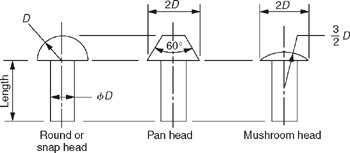
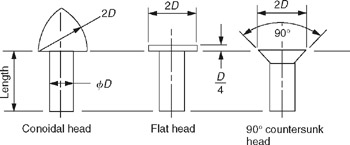
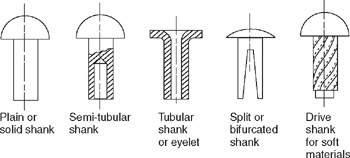
4.2.2 Typical riveted lap joints
Single row lap joint
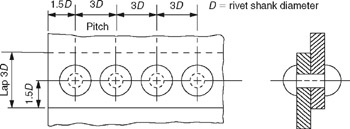
Double row (chain) lap joint
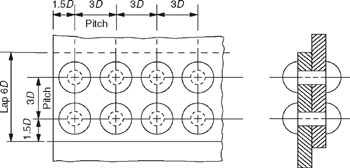
Double row (zigzag) lap joint

4.2.3 Typical riveted butt joints
Single strap chain riveted butt joint (single row)
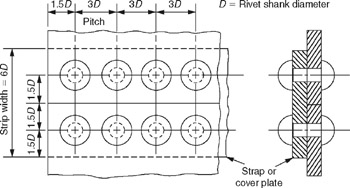
| Note | Note: This joint may also be double row riveted, chain or zigzag. The strap width = 12 D when double riveted (pitch between rows = 3 D). |
Double strap chain riveted butt joint (double row)
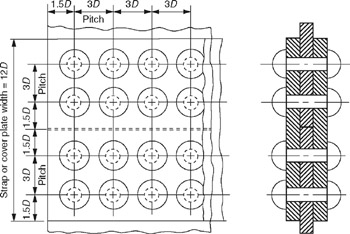
Note: This joint may also be double row zigzag riveted (see Section 4.2.2) or it may be single riveted as above.
4.2.4 Proportions for hole diameter and rivet length
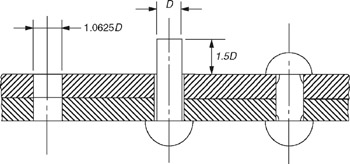
4.2.5 Cold forged snap head rivets
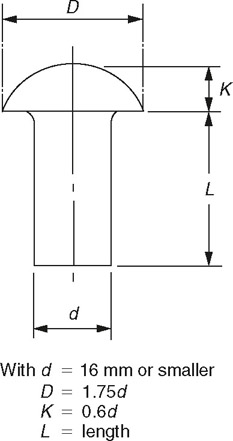

Comments
Post a Comment